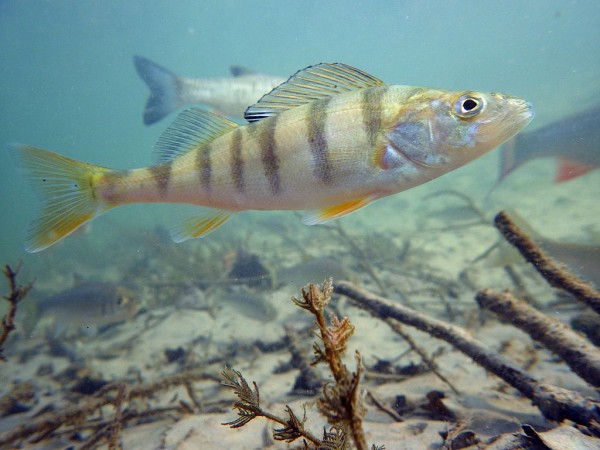Anti-Insomnia Drug Helps Fish Thrive
| Marc Maligalig | | Aug 08, 2014 07:28 AM EDT |
(Photo : Wikimedia Commons)
Swedish researchers have published a paper reporting a drug commonly used to treat anxiety in people has been shown to reduce mortality rates in fish.
The findings may have noteworthy implications for current standard ecotoxicological tests geared towards detecting the awful side effects of contaminants in water while dismissing potentially good side effects.
Like Us on Facebook
Researchers said the drug Oxazepam could change the equilibrium of a species in an ecosystem by improving the health of aquatic organisms. The change, however, could lead to consecutive ecological repercussions, according to the scientists from the Umeå University in Sweden.
Dr. Jonatan Klaminder, lead author of the paper, said current ecotoxicological studies were conducted with common poisonous contaminants in mind. Among these contaminants are dioxins and heavy metals that are the dominant dangers to aquatic organisms in shallow waters.
"Pharmaceuticals, which are designed to improve health, are a new group of contaminants that do not necessarily fit into the traditional view," Klaminder said.
"I think there is a 'bandwagon effect' within the research community where the old test and the traditional view of a contaminant is routinely used without reflection about the conceptual flaw implicit in the methods."
In the experiment, scientists recovered two-year-old Eurasian perches from a lake in Sweden and exposed them randomly to low and high concentrations of Oxazepam.
Oxazepam is a benzodiazepine usually given to suppress insomnia and anxiety in people. It often contaminates shallow waters through filtered sewage and wastewater.
Scientists have shown the drug can enhance the boldness and activity of the sample species.
The concentration of the drug in the study was lower than levels in the treated waters in Europe.
Eggs from a separate population of the fish were also collected and exposed to the three concentrations of the drug during the first nine days of embryonic development. A random group of hatchlings were gathered and analyzed
The mortality rate among the wild hatched fry was high and relatively high among two-year-old perch. The exposure of the treated populations to Oxazepam led to a lower mortality rate compared to the control group.
Tomas Brodin, the team ecologist and co-author of the paper, said the healing effect of the drug that leads to the preservation of one of the members of the ecosystem may generate an equivalent decrease in the population of the species' prey.
The imbalance in the ecosystem may lead to repercussions that need to be considered.
The team said the traditional view of pollutants has blocked them from experimenting for similar side-effects at concentrations relevant to the environment.
©2015 Chinatopix All rights reserved. Do not reproduce without permission
EDITOR'S PICKS
-

Did the Trump administration just announce plans for a trade war with ‘hostile’ China and Russia?
-

US Senate passes Taiwan travel bill slammed by China
-

As Yan Sihong’s family grieves, here are other Chinese students who went missing abroad. Some have never been found
-

Beijing blasts Western critics who ‘smear China’ with the term sharp power
-

China Envoy Seeks to Defuse Tensions With U.S. as a Trade War Brews
-

Singapore's Deputy PM Provides Bitcoin Vote of Confidence Amid China's Blanket Bans
-

China warns investors over risks in overseas virtual currency trading
-

Chinese government most trustworthy: survey
-

Kashima Antlers On Course For Back-To-Back Titles
MOST POPULAR
LATEST NEWS
Zhou Yongkang: China's Former Security Chief Sentenced to Life in Prison

China's former Chief of the Ministry of Public Security, Zhou Yongkang, has been given a life sentence after he was found guilty of abusing his office, bribery and deliberately ... Full Article
TRENDING STORY

China Pork Prices Expected to Stabilize As The Supplies Recover

Elephone P9000 Smartphone is now on Sale on Amazon India

There's a Big Chance Cliffhangers Won't Still Be Resolved When Grey's Anatomy Season 13 Returns

Supreme Court Ruled on Samsung vs Apple Dispute for Patent Infringement

Microsoft Surface Pro 5 Rumors and Release Date: What is the Latest?










